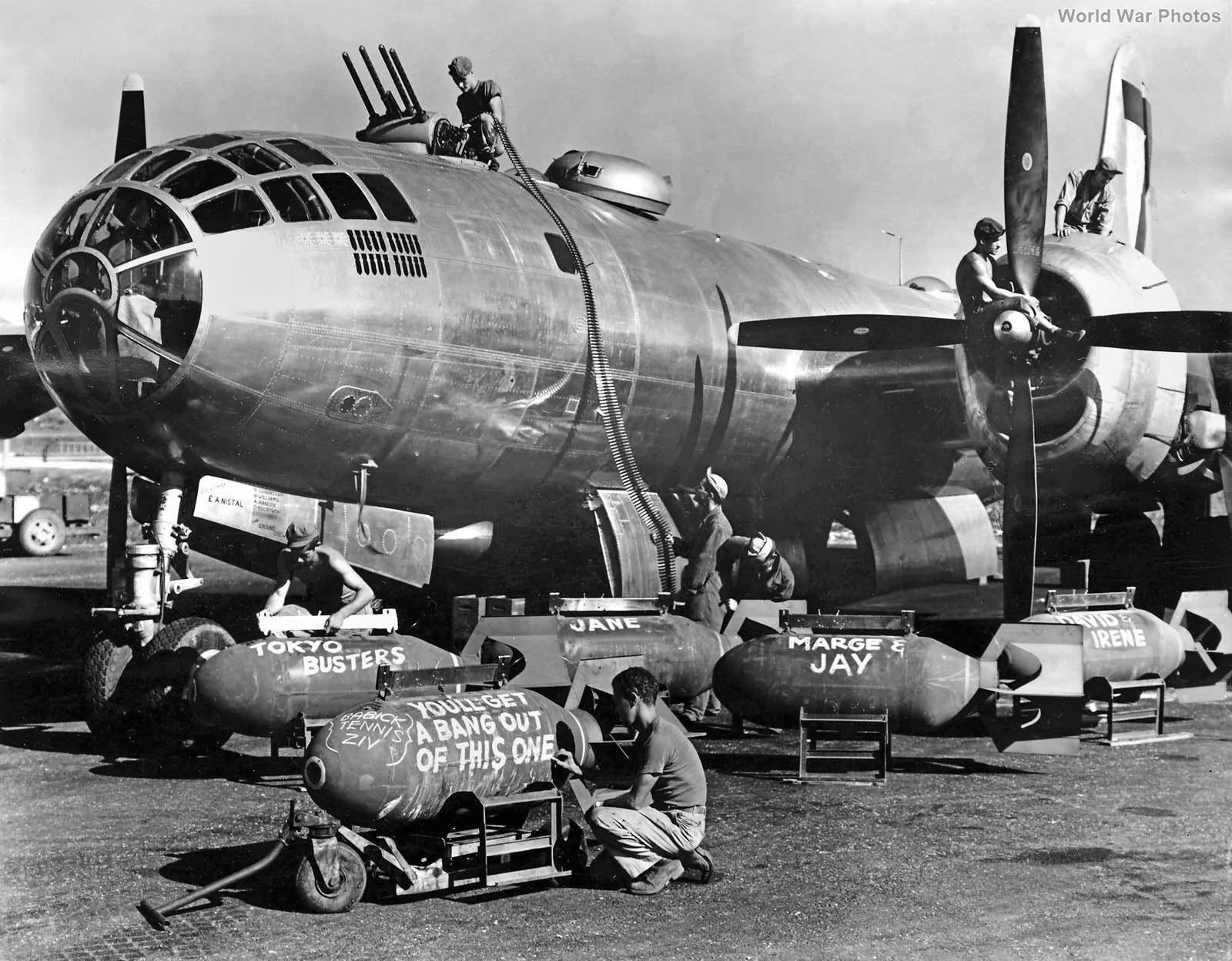The B-29 Superfortress had two bomb bays mounted in tandem between the forward and rear crew compartments, one forward and one aft of the wing center section.
- Bombs were ejected in a forward-to-aft sequence from the two bomb bays to maintain a proper center of gravity.
- Each bomb bay was fitted with six bomb racks, three forward and three aft.
- A typical bomb load consisted of forty 500 lb bombs, twenty per bay.
- The B-29 could carry up to 20,000 lb (9,000 kg) of bombs.
Bomb Load Capabilities
- The B-29’s bomb bays could accommodate various bomb loads, including:
- Eighty 100 lb bombs
- Fifty-six 300 lb bombs
- Forty 500 lb bombs
- Twelve 1,000 lb bombs
- Twelve 1,600 lb bombs
- Eight 2,000 lb bombs
- Four 4,000 lb bombs
- The Silverplate B-29 could carry up to two 10,000 lb-class atomic bombs.
- Some B-29s were fitted with external bomb racks underneath their inner wing sections, between the fuselage and the inboard engine nacelles, allowing for the carriage of very large bombs such as:
- Four 4,000 lb bombs (two on each external bomb rack)
- The British 12,000 lb Tallboy
- Modifications to both bomb bays to accept a single British 22,000 lb Grand Slam
Bomb Sights
- The B-29 used two types of bomb sights during World War II:
- Norden Model D-5
- AN/APQ-7 Eagle radar sight, featuring a large 15 ft-span (5 m) wing mounted beneath the fuselage, used for bombing at night and through heavy cloud cover
Atomic Bombs
Mk-1 “Little Boy”
- Length: 120 in (3.05 m)
- Diameter: 28 in (0.7 m)
- Weight: 8,900 lb (4,000 kg)
- Yield: 15-16 kilotons
- Type: Gun-type heavy uranium bomb
- Number Built: 5
Mk-3 “Fat Man”
- Length: 120 in (3.25 m)
- Diameter: 60 in (1.5 m)
- Weight: 10,300 lb (4,700 kg)
- Yield: 21-49 kilotons
- Type: Plutonium implosion bomb
- Number Built: 120
Cancelled “Thin Man”
- Length: Approximately 17 ft (5.15 m)
- Diameter: 2 ft (0.6 m)
- Weight and Yield: Unknown due to cancellation prior to deployment
